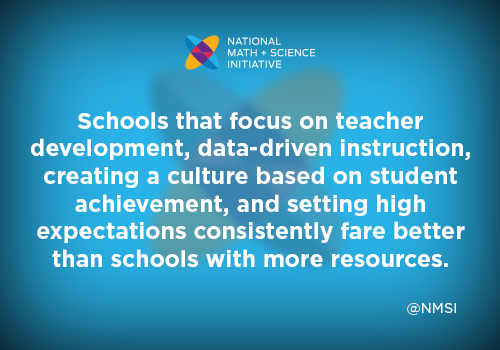The Ins and Outs of a Rigorous Lesson How to Cultivate Deep Content Knowledge
Timothy Huneycutt |
March 7, 2014
 For quite a long while, the term “rigorous” has been used in the education world to define lessons, instruction, standards, and so forth – but what exactly does “rigor” mean, and how does it tie in with education? We asked our resident Science Coordinator and STEM subject matter expert Jonathan Edquid to elaborate on what rigor means, how it impacts our students, and how a teacher can increase rigor in his or her practice.
For quite a long while, the term “rigorous” has been used in the education world to define lessons, instruction, standards, and so forth – but what exactly does “rigor” mean, and how does it tie in with education? We asked our resident Science Coordinator and STEM subject matter expert Jonathan Edquid to elaborate on what rigor means, how it impacts our students, and how a teacher can increase rigor in his or her practice.
Literally, rigor means stiffness; figuratively, it means harshness – and it is not hard to see both of these aspects expressed in our education system in new expectations for both teachers and students – but NMSI’s definition moves beyond these basic meanings. Edquid explains, “Rigor is expecting each student to learn at high levels, providing support for students to learn at these high levels, and each student demonstrating learning at high levels.”
With this three-pronged definition of rigor, Edquid continues, a rigorous lesson would thus be one “based on rigorous standards that require students to engage in critical thinking and perform at the higher levels of Bloom’s taxonomy.” To this end, there are three components that teachers must ensure are in place to effectively implement a rigorous lesson and cultivate deep content knowledge in their students:
•Structured student support. In order for a lesson to be truly rigorous, the teacher must structure the different levels of instruction within the lesson to help support their students. Asking probing questions, providing appropriate wait times, modeling skills, and giving time for practice are all fantastic strategies to help teachers scaffold instruction and give the proper support each of their students need to develop valuable critical thinking skills.
•Student-centered instruction. “Because of the sharp focus on the student,” says Edquid, “a rigorous lesson will be student-centered.” According to the very definition of rigor, each and every student is expected to demonstrate high levels of learning. It is up to the teacher to facilitate these higher levels of thinking during the learning process. A great way to do this is through flipping the classroom, which helps promote student collaboration, self-directed learning, and promotes more time on task in the classroom.
•Student-focused assessment. Because a rigorous lesson requires structured support and student-centeredness, it only makes sense that an effective assessment will require the same amount of focus for each student. Not all students learn the same way or at the same rate, nor should they be expected to. Therefore, says Edquid, “there should be multiple opportunities for students to demonstrate mastery of content or skills.” Formative assessment is the strategy he recommends, and he urges teachers to use it “deliberately and frequently to monitor student learning.”
As these points have illustrated, rigor can be a challenging concept to properly integrate into classroom instruction, but it is one that will not only benefit the student’s experience, but the teacher’s experience as well. According to Edquid, the best way for a teacher to integrate more rigorous strategies and lessons into their practice is “by being rigorous with their own learning. If teachers don’t fully understand the content themselves, they don’t know the right questions to ask to help students make better connections in their learning. Teachers should be honest about what they do and do not know and reflect on their current practice and how rigorous it actually is.”
Rigor, as challenging as it is, is a critical concept that NMSI integrates into all of our programs and materials, and we strive to ensure that all of our teachers have the support they need to ensure student success in their classrooms. We understand the desperate need for more effective resources and professional development – especially as the Common Core draws ever closer – so we have made it our goal to help train and support more of America’s teachers through our College Readiness and teacher training programs. Our classrooms need support, and we’re here to provide it with our upcoming Summer Institutes! Register today by clicking the button to improve your practice and increase student success!